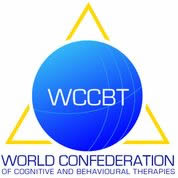
Charity Wilkinson-Truong Recorded Webinar: Exposure Therapy Basics – Getting Started
-
Register
- Non-member - $35
- Member - $25
- Student - $15
Original Air Date: January 23, 2020
Abstract:
Exposure therapy has existed for nearly 100 years. Exposure has a robust body of evidence to demonstrate its use for anxiety disorders, posttraumatic stress disorder, and obsessive-compulsive disorder. Exposure is not only a highly effective treatment; research has shown that it is well tolerated and has lasting results. Despite this, exposure treatment may be difficult to obtain. Therapists rarely use exposure therapy. Many cite fear of using exposure due to lack of training to properly administer the treatment. Additionally, myths about exposure therapy have endured. This training will provide psychologists with the tools that they need to begin using exposure in their practice.
This training will begin by addressing unhelpful myths about exposure to help reduce therapist fears. Participants will learn about emotional processing theory and inhibitory learning theory and how these apply to real world clinical settings. Exposure will be demonstrated through a series of videos and instruction.
Participants will also learn to provide a rationale for exposure that is understandable to clients. Methods for creating exposures will be demonstrated. Participants will also learn how to conduct exposures during therapy sessions and assign home practice. Avoidance and safety behaviors that maintain and worsen symptoms will also be discussed.
Common errors made by therapists who are new to using exposure, such as delaying or avoiding treatment for fear of client distress will also be discussed. Finally, goals for therapy and maintenance of improvement will also be reviewed.
Learning Objectives:
At the conclusion of this webinar, participants will be able to:
- Identify myths about exposure therapy and counter these with helpful information for clients and colleagues and identify disorders for which exposure therapy has strong evidentiary support.
- Articulate the importance of using in-session and between-session exposures and provide a rationale for using exposure therapy that is understandable to clients and their families.
- Create exposures that match their clients’ fears and implement these exposures in session and increase or decrease the intensity of exposures based on clients’ in session response.
- Explain the importance of not avoiding fears with clients or delaying treatment and identify ways that clients are using avoidance and safety behaviors that maintain and worsen anxiety.
- Understand the difference between scripting exposure and in-vivo exposure and when each of these might be utilized.
About the Presenter:
Dr. Wilkinson-Truong currently works as a Supervisory Clinical Psychologist for the United States Army. In this role, she oversees an Embedded Behavioral Health clinic at Ft. Hood, TX. She also works as a part-time, Consulting Psychologist at Stress and Anxiety Service of NJ. She is a Cognitive Behavioral psychologist, who has focused on the dissemination and use of empirically supported practices throughout her career. Her past experiences include working as the Lead Psychologist at the Rutgers Counseling Center. Prior to this, she was as the Chief of Psychology at the Fort Hood, TX site for the StrongStar PTSD Research Consortium. While there, she oversaw clinical operations and provided supervision for the largest randomized control trials of Prolonged Exposure (PE) and Cognitive Processing Therapy (CPT) with Active Duty Military Personnel to date. Dr. Wilkinson-Truong’s research focuses on the dissemination of empirically supported treatments for PTSD and OCD.
Recommended Readings
Harned, M. S., Dimeff, L. A., Woodcock, E. A., Kelly, T., Zavertnik, J., Contreras, I., Sanner, S. (2014). Exposing clinicians to exposure: A randomized controlled dissemination trial of exposure therapy for anxiety disorders. Behavior Therapy, 45, 731-744.
Farrell, N. R., Kemp, J. J., Blakey, S. M., Meyer, J. M., & Deacon, B. J. (2016). Targeting clinician concerns about exposure therapy: A pilot study comparing standard vs. enhanced training. Behaviour Research and Therapy, 85, 53-59.
Farrell, N. R., Deacon, B. J., Dixon, L. J., Lickel, J. J. (2013). Theory-based training strategies for modifying practitioner concerns about exposure therapy. Journal of Anxiety Disorders, 27, 781-787.
Farrell, N. R., Deacon, B. J., Kemp, J. J., Dixon, L. J., & Sy, J. T. (2013). Do negative beliefs about exposure therpay cause its suboptimal delievery? An experimental investigation. Journal of Anxiety Disorders, 27, 763-771.
Hipol, L. J., & Deacon, B. J. (2012). Dissemination of evidence-based practices for anxiety disorders in Wyoming: A survey of practicing psychotherapists. Behavior Modification, 37(2), 170-188.
All attendees will receive a certificate of completion when the course requirements are satisfied. Certificates of completion is included in the cost of the webinar
ABCT is approved by the American Psychological Association to sponsor continuing education for psychologists. ABCT maintains responsibility for this program and its content
The Association for Behavioral and Cognitive Therapies has been approved by NBCC as an Approved Continuing Education Provider, ACEP No. 5797. Programs that do not qualify for NBCC credit are clearly identified. The Association for Behavioral and Cognitive Therapies is solely responsible for all aspects of the programs
The Association for Behavioral and Cognitive Therapies is recognized by the California Board of Behavioral Sciences for Marriage and Family Therapist (MFT) to offer continuing education as Provider #4600

